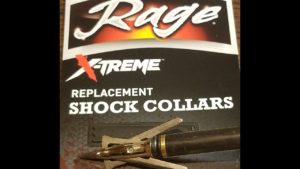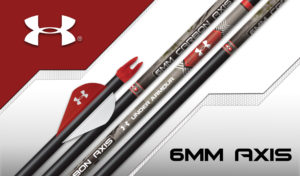No matter how accurate or powerful your compound, traditional, or crossbow you won’t experience success on big game unless the broadhead functions properly. Some archers want the cutting certainty of a fixed head with no moving parts, while others relish the increased wound channel and flight characteristics of mechanical heads. Here’s how to make a smart choice.
Mechanical Designs for Crossbows
 Crossbow broadheads function well with compound bows, but not the reverse. I learned in my experimentation that an expandable broadhead that performed well from a compound bow may not fly well from a crossbow. Launch speeds can be so great from today’s ultra-fast crossbows, that blades can open prematurely at launch or in flight, ruining accuracy. In one instance, I found a cut on the crossbow’s cocking stirrup where the blade had opened at launch. Crossbow heads often have “O-rings” or some type of retention device that hold blades at the “ready” position until impact.
Crossbow broadheads function well with compound bows, but not the reverse. I learned in my experimentation that an expandable broadhead that performed well from a compound bow may not fly well from a crossbow. Launch speeds can be so great from today’s ultra-fast crossbows, that blades can open prematurely at launch or in flight, ruining accuracy. In one instance, I found a cut on the crossbow’s cocking stirrup where the blade had opened at launch. Crossbow heads often have “O-rings” or some type of retention device that hold blades at the “ready” position until impact.
Broadheads for Compound Bows
High-end compounds can launch arrows at the speed of some crossbows, yet the mechanics of the two bows are very different. The Excalibur Micro (a cool crossbow) can launch an arrow at 315 fps from a draw weight of 260 pounds, unleashing this rocket-like propulsion on an arrow just 16.5 inches long. Contrast this to one of the new Elite, Hoyt, or Mathews bows that can generate the same or higher arrow speed, but with a much longer power stroke. Crossbow arrows are usually thicker and stiffer than compound arrows, especially more than the thinner micro-shafts. Compound arrows are more limber and oscillate when launched, forces that don’t play well with some broadheads.
Critical Practice

Regardless of the broadhead choice, it’s absolutely imperative that your broadheads fly like target points. For building muscle memory, you can’t beat a bag-type target for practice as you can pound it all day long with any speed arrow and remove the shaft with two fingers.
As the season draws near, you want to switch to a 3-D target, concentrate on an exact arrow placement and shoot from various angles and distances. Point is, no pun intended, if you are using “live ammo” you will be burning expensive broadheads and chewing up your targets. If you broadheads don’t fly like target points, switch brands.
Maximize Penetration

Exit wounds are critical for big game recovery. An animal that hemorrhages profusely will expire in seconds. Unfortunately, even a few seconds at breakneck speed can allow the animal to travel out of sight and require trailing. For maximum penetration, keep these three tips in mind:
- Hone those blades: If you use a fixed blade, make sure they are razor sharp and never re-use a mechanical head. Even if it appears sharp, minor damage from the previous shot may cause it to malfunction.
- Consider microshafts: When Axis arrows were first introduced, I quickly saw how they increased penetration on targets and big game. At first there were few choices among broadheads for skinny shafts, but that’s changed today.
- Shoot a heavy arrow: After two years of experimenting with heavy arrows, I’m impressed with Steel Force and Phat Head from 3-Rivers Archery. These are very much “old school” heads, yet they come amazingly sharp and hold that edge through brief practice on foam targets. Additionally, you can buy target points in weights from 150 grains to 300 grains.



















![The Best Deer Camp Chili [VIDEO] Deer Chili Ingredients, Tomatoes, Chili Spices](/wp-content/uploads/2015/10/Deer-Chili-Deer-Camp-Recipe-218x150.jpg)
![How to Call Elk Early in the Season [VIDEO]](/wp-content/uploads/2016/08/byers003-218x150.jpg)




![Idiots Disturb Hunter: How Would You Have Handled It? [VIDEO]](/wp-content/uploads/2015/10/DSC00110-e1474487693878-100x70.jpg)
![Albino Buck Shocked to Shed His Antlers [VIDEO]](/wp-content/uploads/2015/10/AlbinoDeer-100x70.jpg)